Fermenting beets is the easiest way to preserve and pickle this earthy vegetable. Salty, sour, and naturally sweet, fermented beets are absolutely delicious.
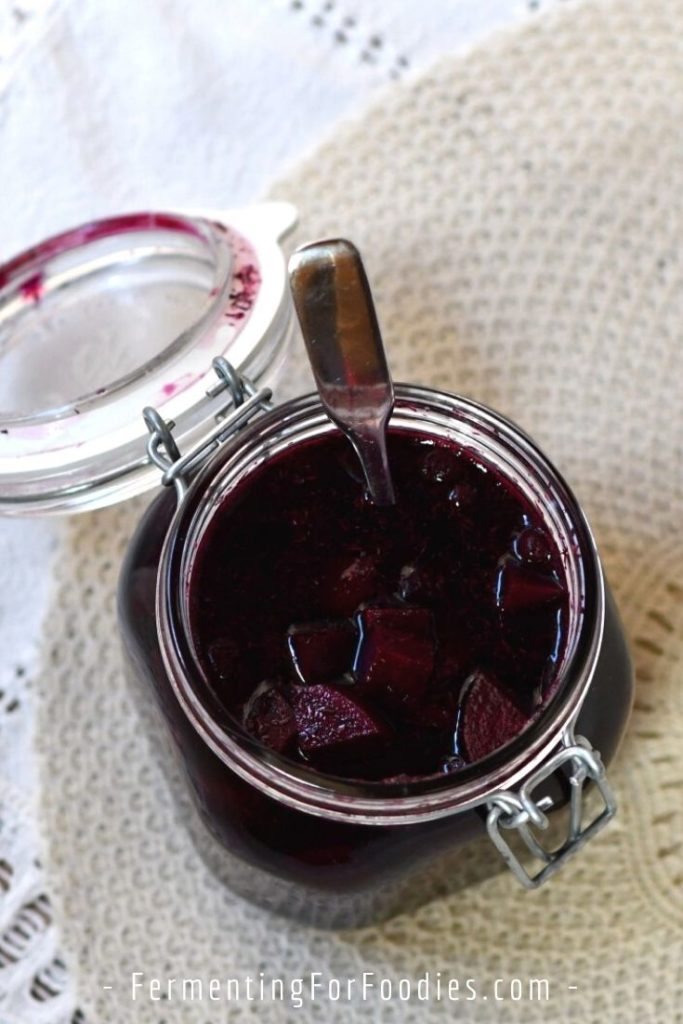
Beets are a year-round seasonal vegetable in the pacific northwest. And they arrive in our farm box nearly every week. So we eat a LOT of beets. Fermenting beets is one of our favorite ways to prepare them.
Healthy Probiotic Beets
Beets are naturally full of antioxidants. They are a great source of vitamins and minerals and are beneficial for a number of health concerns including diabetes and heart disease. This is why beets form the basis for my immune-boosting kvass.
Fermented beets are a perfect addition to most meals. I especially love them with a plowman’s lunch. There’s something wonderful about the combination of pickled vegetables and cheese.
Here are a few more dishes featuring fermented beets:
- A purple addition to a probiotic potato salad.
- Add them to a healthy and wholesome grain bowl.
- Use them in a Russian beet salad.
- I like using the beet brine to make dark purple pickled eggs.
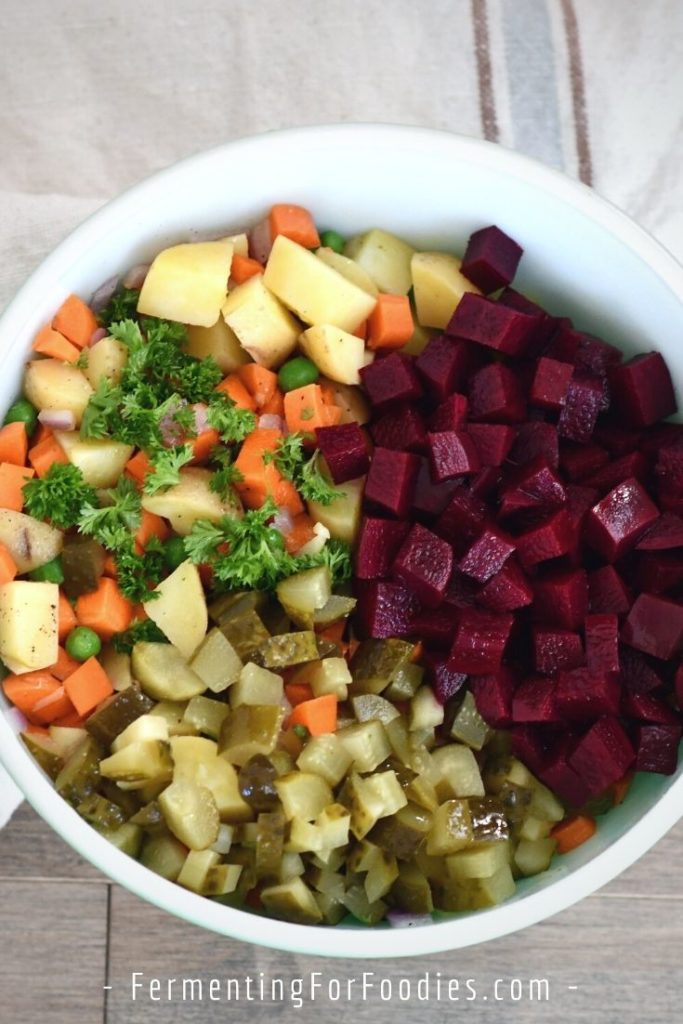
Flavors for Fermented Beets
The best part of making your own fermented foods is experimenting with flavor!
Here are 5 traditional flavors for pickled beets. These are all scaled for a quart-sized (1 L) jar.
- Sweet cinnamon beets: Add 1 cinnamon stick and 3 whole cloves.
- Tradition pickle: This is one of our favorite flavors. Add 1 Tbsp pickling spice, 2 cloves of garlic, and a flowering head of fresh dill. Be sure to add the cider vinegar because it really helps to develop the pickle flavor.
- Caraway: This is delicious with cheese. Add 2 tsp caraway and 5 black peppercorns to each jar.
- Garlic: Another favorite flavor. Add 1-2 cloves of garlic per jar. Again, I recommend using cider vinegar for the ferment.
- Hot and spicy: Slice one or two hot peppers in half and add them to the jar without removing the seeds. The final heat of the beets will depend on the spiciness of the pepper.
Long-term storage
Fermented beets can be packed and stored for up to a year in a cool, dark location. This is a great, zero-waste, and zero-energy alternative to conventionally pickled beets!
If you want to store your pickled beets for the long term, here are a few things you need to do, to ensure that they remain mold-free.
- Sanitize the jars before packing the beets.
- Increase the salt to 1 Tbsp per quart (1 L) jar.
- Use a jar with a fermentation-specific lid, like a fido jar or a pickle pipe.
- Feel free to use any flavor you want. It’s fine to include the vinegar or skip it. As long as you add enough salt, your ferment will be fine.
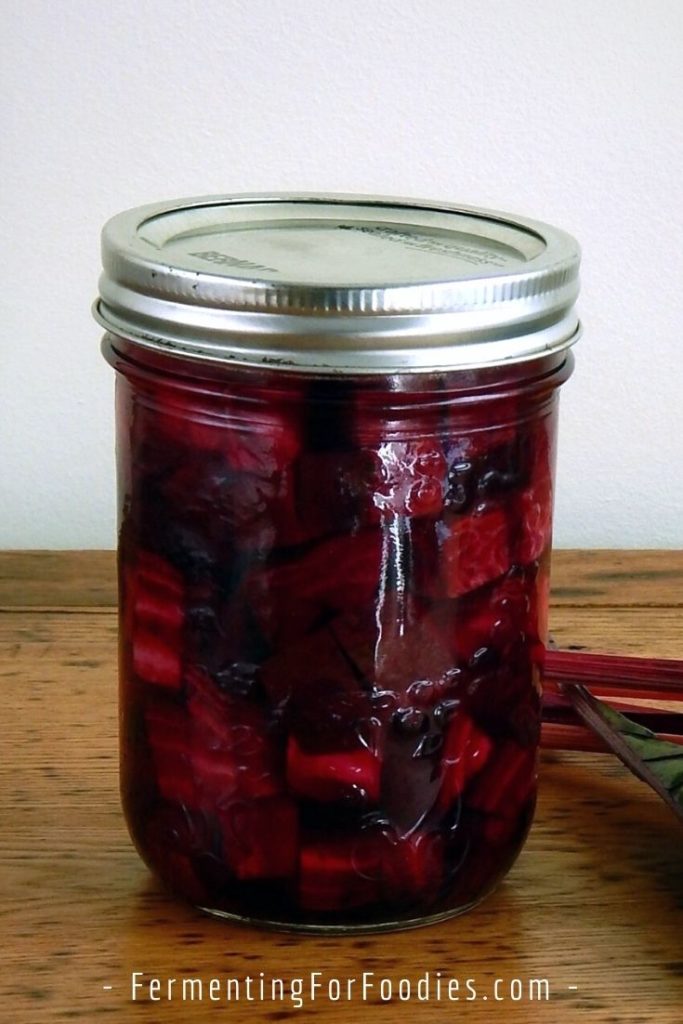
Fermented Beets
Fermented beets are probiotic and tangy. Perfect for adding a bit of zest to all sorts of meals. Try all five flavor options! See the section above for more details.
- Prep Time: 10 minutes
- Total Time: 10 minutes
- Yield: 1 Quart Jar 1x
- Category: Pickles
- Method: Fermented
- Cuisine: Probiotic
- Diet: Vegan
Ingredients
- 1 cup of filtered water to cover (chlorine-free)
- 1 1/2 tsp non-iodized salt
- 6 small beets or 3 medium beets
- 2 Tbsp cider vinegar (optional, see notes)
- Other flavors (see section above)
Instructions
- Mix the salt and a 1/2 cup of water in a quart-sized (1 L) jar.
- Scrub the beets. Cut off the top and tail, then chop them into bite-sized pieces. There’s no need to peel them, as the skin will help provide the culture for the ferment.
- Pack the beets into a jar. At this point, you can add spices and other flavors. See the section above for different flavoring options.
- Add the cider vinegar (if you are using it). Top with a 1/2 cup of water, enough to completely cover the beets.
- There is no need to weigh down the beets as they usually don’t float. Cap the jar with a lid that will allow gas to escape.
- Leave the jar to ferment at room temperature for about 3-7 days. (See the section above for details on how to ferment beets for up to a year).
- Store in the refrigerator and consume within 1 month.
Notes
- Beets don’t require a starter culture to ferment. Organically grown beets naturally have a lactic bacterial culture. However, I like the added tanginess provided by cider vinegar, so I always add a little to every jar. Adding vinegar will actually help to speed up the ferment!
- If you want to reduce the salt to 1/2 tsp, then increase the cider vinegar to 1/4 cup and only ferment for 3 days. This will result in a pickled beet that is more vinegary than salty.
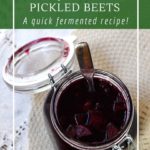
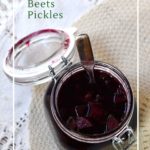

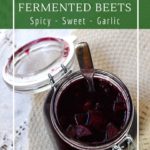

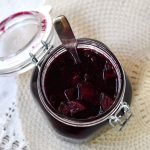
Do the beets soften up after fermenting or do they stay hard?
They will soften up a bit… it depends on how long you ferment them. The longer they ferment, the softer they will be.
Isn’t adding vinegar diminishing the enzymes and naturally occurring good bacteria? I know you add “optional” but I’ve never added vinegar to a natural ferment for this reason. Curious about your thoughts.
Vinegar will kill the naturally occurring bacteria if you use too much. It’s about the pH levels… and the acid-loving bacteria can handle a pH of around 3.6 (not sure the exact amount off the top of my head.) So finishing with a bit of vinegar is fine. Finishing with a lot of vinegar is pointless. 🙂
Should the beets be peeled?
Nope! The skin will help with the ferment and you won’t notice it once it’s finished fermenting. However, do peel off any bits that are gnarly (roots, deep cracks, etc). Enjoy!
Do I put the lid tightly on the jar, or let it breath like a sour dough starter?
Great question! These beets will bubble as they ferment, so you use a loose lid or cover with a tea towel. Enjoy!
i just made these fermented beets & noticed that 1 cup of water wasn’t nearly enough to cover the beets (???)
It will depend on exactly how large your beets are. Just use as much water as you need. Cheers!
Can these be canned as well? Thank you.
Hi Sherri, This isn’t a recipe for canned (pickled) beets. So the acidity isn’t what would be considered safe for typical boil water canning. However, you could pressure can them. Generally, fermented beets will last for quite a while without canning. You could actually leave them to ferment for several months, provided you increased the salt to 3 tsp (1 Tbsp) per quart jar and used a good airlock/fido jar to prevent contamination. Cheers!
Canning will kill the probiotics you are after with the fermentation. Defeats the purpose. Fermented food last quite a long time (many months) in the fridge, or if you are lucky to have one, a cold room or cellar.
Agreed!
Are you using canning salt, kosher salt, or table salt? Measurements are different for each.
No iodized salt. I use pink himalayan .
Have you had any success using store bought canned beets and fermenting them?
sould i put Cook beets or none-cook?
Use raw (not cooked) beets for this recipe. They naturally have the necessary culture on their skin! Cheers!